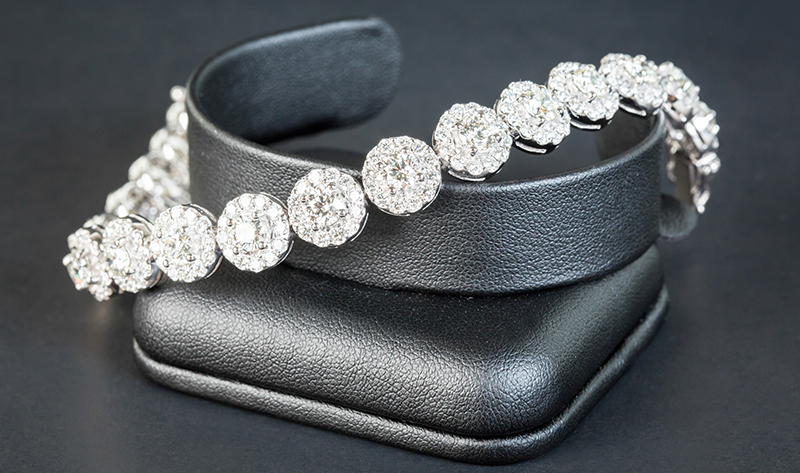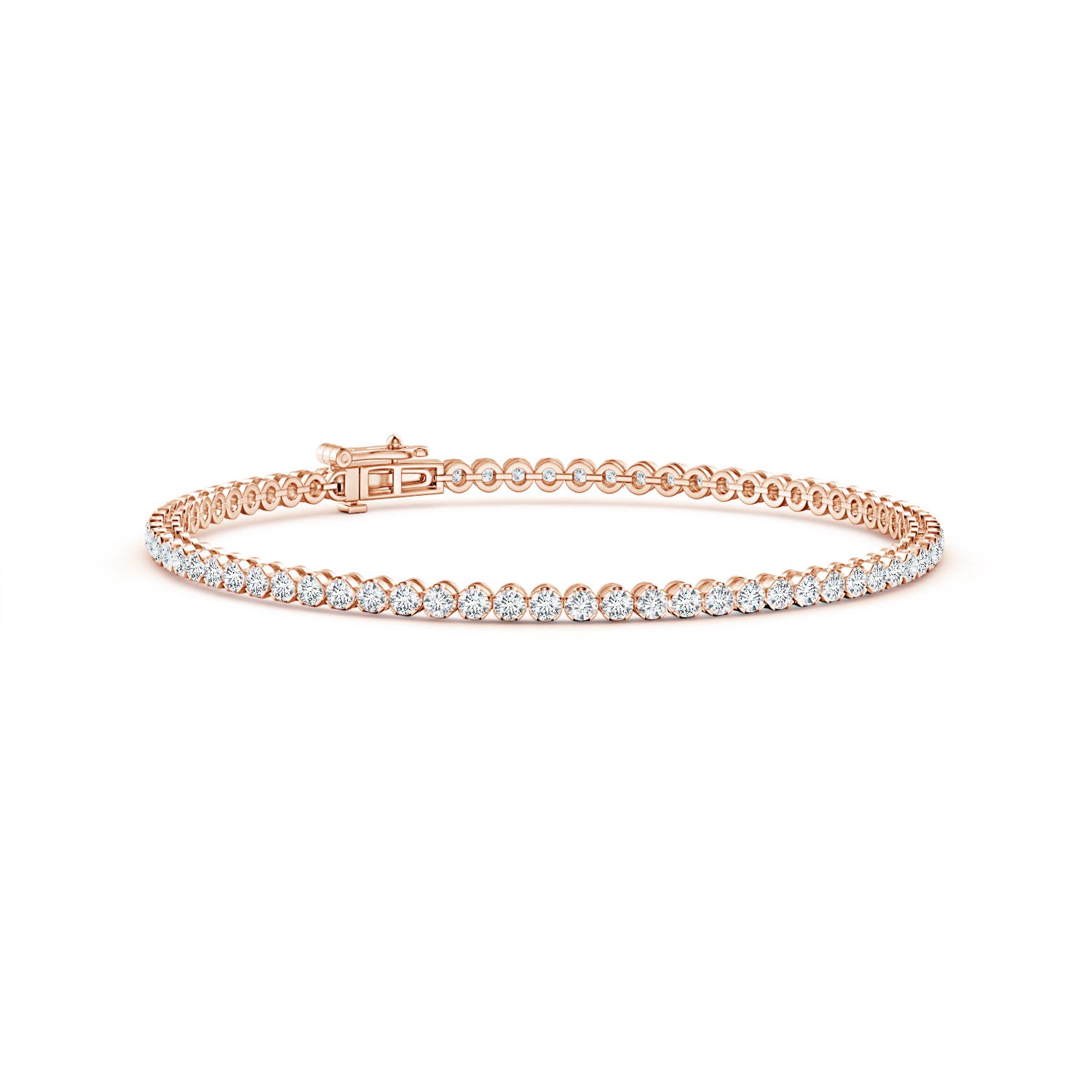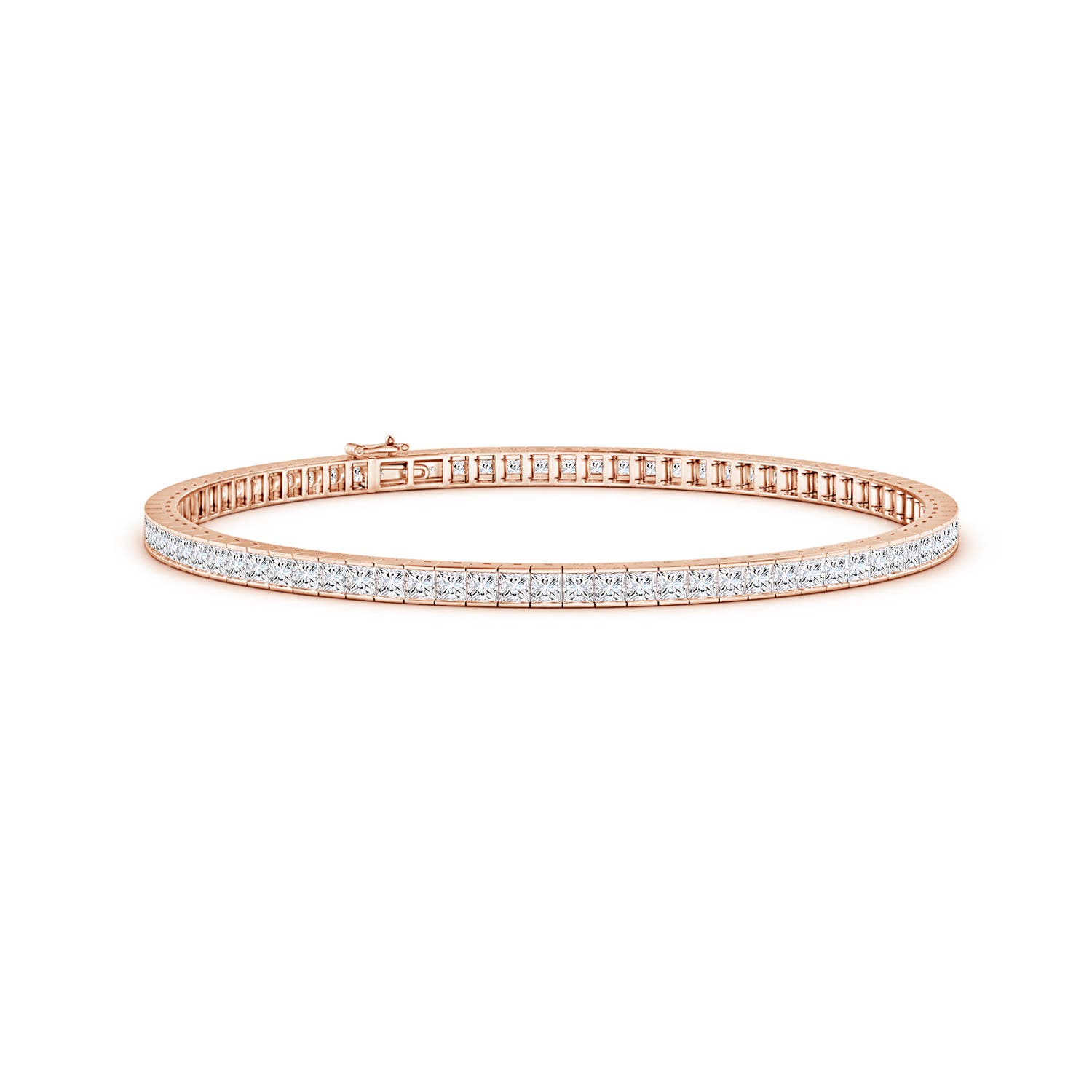Unlike mined diamonds, which are 100% authentic, lab-grown diamonds are created synthetically in a laboratory. They are identical to earth-grown diamonds in terms of chemical properties, optics, and physical structure. Lab-grown diamonds are a sustainable approach to generating beautiful diamonds with a low environmental impact.
Although lab-grown diamonds have been around for quite a while, and are not particularly novel, the current rise to fame has been significant, since a lot of people want to opt for a more ecologically-responsible option. Although these diamonds are popular, there are still crucial factors to consider when choosing a gold statement bracelet or any bracelet which contains a lab-grown diamond. Knowing the truth is vital because traditional jewelers continue to promote myths about lab-grown diamonds to protect the sales of their earth-mined gems. In this blog, we will delve deep into what lab-created diamond bracelets entail and how you can buy the perfect one.
What Are Lab-Grown Diamonds Bracelets?
Like natural diamonds, lab-grown diamonds are unadulterated carbon crystals but artificially produced. Diamonds produced in a lab, also known as manufactured diamonds, artificial diamonds, or human-made diamonds, are not naturally occurring diamonds excavated from the earth, and are formed differently. These diamonds undergo advanced testing to distinguish them from natural diamonds because they were created in a lab instead of being excavated from the soil. There are two methods when it comes to lab-grown diamonds, which you need to be aware:
HPHT or High-Pressure High Temperature is the first method for making lab diamonds. In this method, scientists place a diamond seed in a pressure vessel and raise the temperature and pressure until they resemble the conditions present deep in the ground, where diamonds spontaneously crystallize over years. The lab-created diamond begins to form as a crystal on the seed and after a few weeks, the crystal grows sufficiently to be cut into brilliant diamonds.
The second technique is CVD, or “Chemical Vapor Deposition”. In this process, a diamond seed is suspended inside a chamber that contains hydrogen and methane while also heating the gasses to create white-hot plasma. The diamond is created as layers of carbon precipitate out of the plasma on the seed. The chemically purest form of diamond, Type II a, with excellent color and clarity, is produced using CVD technology. After being developed by CVD, generated diamond crystals are occasionally subjected to a second high-pressure, high-temperature processing step to align the carbon atoms and brighten the hue.
Benefits of Lab-Grown Diamonds
- The lab-grown diamonds’ structural, chemical and visual characteristics are identical to those of natural diamonds. They are similar in terms of brightness, blaze, and specular reflection.
- One of the most significant advantages of buying a lab-grown diamond is that you may acquire a considerably larger carat size for the same or less money than you would with a mined diamond. In addition, you even get an equivalent 4Cs: cut, color, clarity, and carat. In light of this, there is no doubt that buying lab-grown diamonds is the most economical option.
- Diamonds created in a lab marvel of contemporary technology that represents human inventiveness. In jewelry pieces like bracelets, solitaire necklaces, stud earrings, and engagement rings, these diamonds dazzle just as brilliantly and are as strong and beautiful as natural diamonds.
- Mining for diamonds has had a terrible impact on the planet for years. Diamond mining not only obstructs the natural landscape but also uses a lot of fossil fuels in the extraction process. Not even one of these environmental effects occurs with lab-grown diamonds. Some labs even use solar energy, which is considered to be one of the most eco-friendly ways of processing.
- Lab-grown diamond bracelets come in several designs with various metals, diamonds of varied colors, and a significant carat weight. You can also purchase lab-grown diamond bridal bracelets for small wrists, pendants, necklaces, and rings, which can add to your stunning jewelry collection.
- Different types of men’s gold bracelets can be formed with the help of lab-grown diamonds. This is especially suitable for men as lab-grown diamonds vary in size and shape. Diamond bracelets can be a refreshing change from the usual men’s leather bracelets.
Tips to Remember Before Purchasing Lab-Grown Diamond Bracelets
You should consider a few factors before acquiring a lab-grown diamond bracelet, or any jewelry made with a synthetic diamond. Below, we have mentioned a few points that can help you with your purchase.
- Price- The cost of lab-grown diamonds is 10 to 50% less than that of natural diamonds, even though it comes with the same clarity and brilliance. A lab-grown diamond’s price is determined by its characteristics, much like with genuine diamonds. Higher grades for cut, color, and clarity are associated with more expensive costs for lab-grown diamonds. A lab-grown diamond’s cost does not rise massively with carat size as a genuine diamond. A 2-carat natural diamond with a round cut costs over $14,000. A comparable lab-grown diamond is about half the price. A lab-grown diamond is also an option if you want a large diamond for your engagement ring or a striking jewelry piece such as a bracelet. Natural fancy-colored diamonds are far more expensive than lab-grown diamonds, which can also be tinted. If you want a beautiful colored blue or pink diamond but don’t want to pay a high price, they are a fantastic alternative.
- The 4Cs- The 4 Cs—color, cut, clarity and carat weight—is crucial when purchasing a diamond, whether made in a lab or mined from the soil. The 4Cs of diamond quality—color, clarity, cut, and carat weight—are used to judge the quality of lab-grown diamonds just the way they are with natural diamonds. The 4 C’s will help you determine the diamond’s quality and significantly impact its price. Diamonds grown in laboratories are produced in environments remarkably similar to those found on earth, where natural diamonds are formed. Both procedures result in imperfections as the diamond grows. Lab-grown diamonds are assessed similarly to natural diamonds in cut and carat. But when it comes to cutting, lab-grown diamonds offer an intriguing edge. The final carat weight is reduced by discarding all extra material that was cut from it. Some diamond cutters may cut a diamond with a Good or Very Good cut rather than an Ideal or Excellent cut to maintain the diamond’s size. This happens more frequently when the diamond is big or close to the highly sought-after 1 or 1.5-carat weight.
- Grading- Lab-grown diamonds are graded in the same way as natural diamonds. The quality of lab-grown diamonds depends on their cut, color, and clarity. When purchasing any diamond online, it’s crucial to evaluate these qualities. Numerous prominent gem labs, including the Gemological Institute of America (GIA), the International Gemological Institute (IGI), HRD Antwerp, and the Gem Certification and Assurance Lab, grade lab-grown diamonds (GCAL). Don’t forget to check the grade certificate before buying a lab-grown diamond.
- Online Buying- A lab-grown diamond may be purchased online in a manner that is remarkably similar to that of a natural diamond. Before making a purchase, always research the diamond’s qualities. Reputable internet vendors will provide comprehensive details about the diamond’s cut, color, clarity, and dimensions. Don’t forget to check out the diamond bracelets’ images and videos. By viewing the photos and videos, you will be able to see the diamond as a whole and how it responds to light. Secondly, your diamond must come with a lab report. For lab-grown diamonds, grading reports from the IGI, GIA, HRD, and GCAL are typical.
Conclusion
An excellent substitute for jewelry made with mined diamonds is a lab-grown diamond. Not only is it similar in its appeal and appearance, but it is also ecologically friendly and devoid of any conflicts. Whether you choose a classic statement bracelet that has been made with synthetic diamonds or an engagement ring, the allure and charm will be just as bright and beautiful as that of a natural diamond.
Also Read
- Curate Your Lab Jewelry Capsule Wardrobe
- Lab-Grown Diamond Gifted By PM Modi
- Lab Diamonds and Gems for Custom Rings
- Reasons to Buy Lab-Grown Diamond Jewelry
- How Lab-Grown Blue Sapphires Are Made
- How Are Lab-Grown Rubies Made
- What Are Lab-Grown Diamonds
- IGI Certified Lab-Grown Diamonds
- Lab-Grown Gems for World Environment Day
FAQ
You can style the bracelet according to your ensemble or attire. For a more elegant look, it is best to pair the bracelet with matching drop earrings or a simple diamond-studded necklace. For casual wear, you can wear the diamond bracelet on its own, or you could stack it with other colored gemstone bracelets or bangles.
In contrast to naturally formed diamonds, which are generated by geological processes and are acquired by mining, a lab-grown diamond (LGD) is a diamond manufactured in a controlled technical method. It is also known as laboratory-grown, laboratory-created, artificial, artisan-crafted, or cultivated diamond.
Although most people wear bracelets on their left wrist, there is no rule when it comes to wearing bracelets or bangles.
































